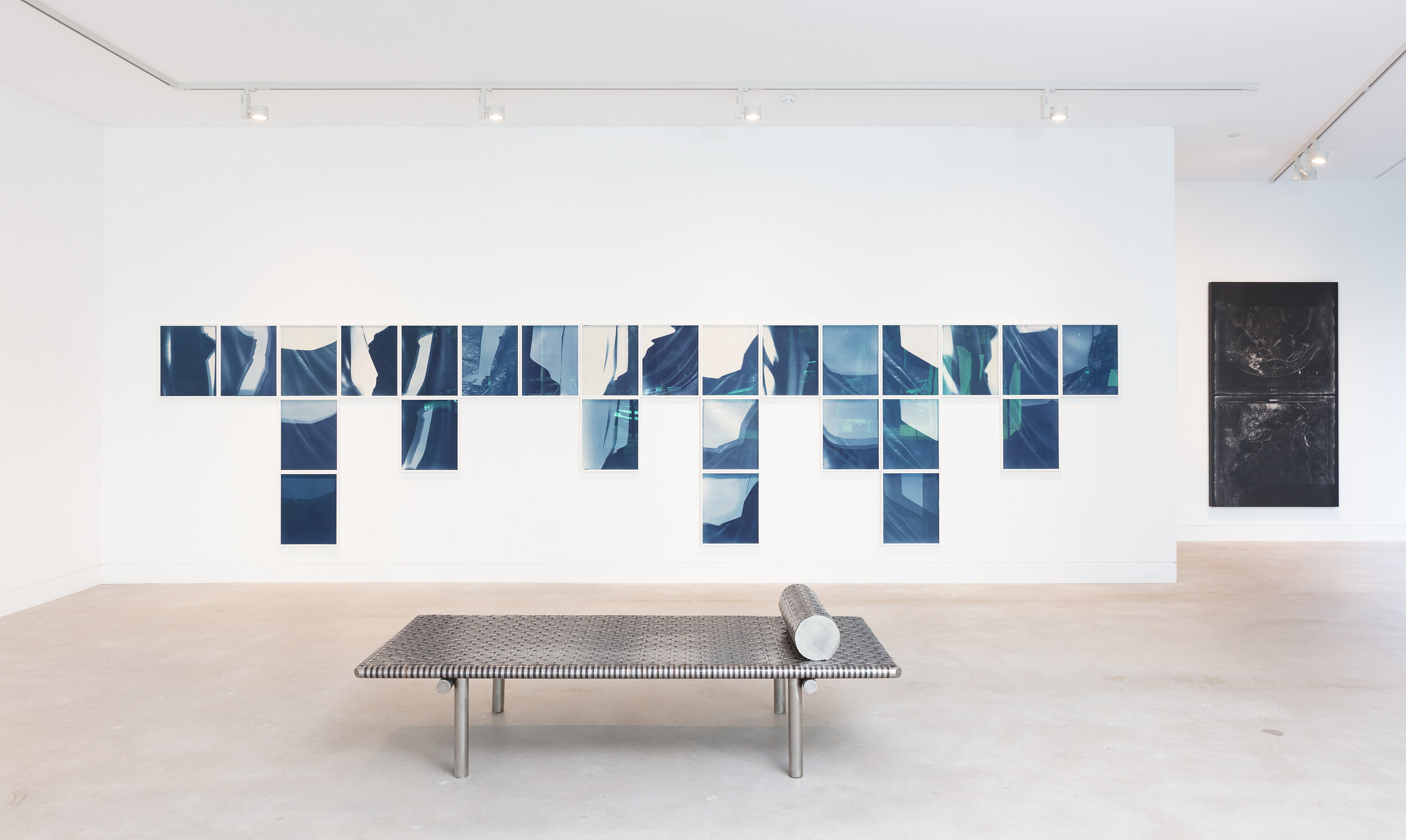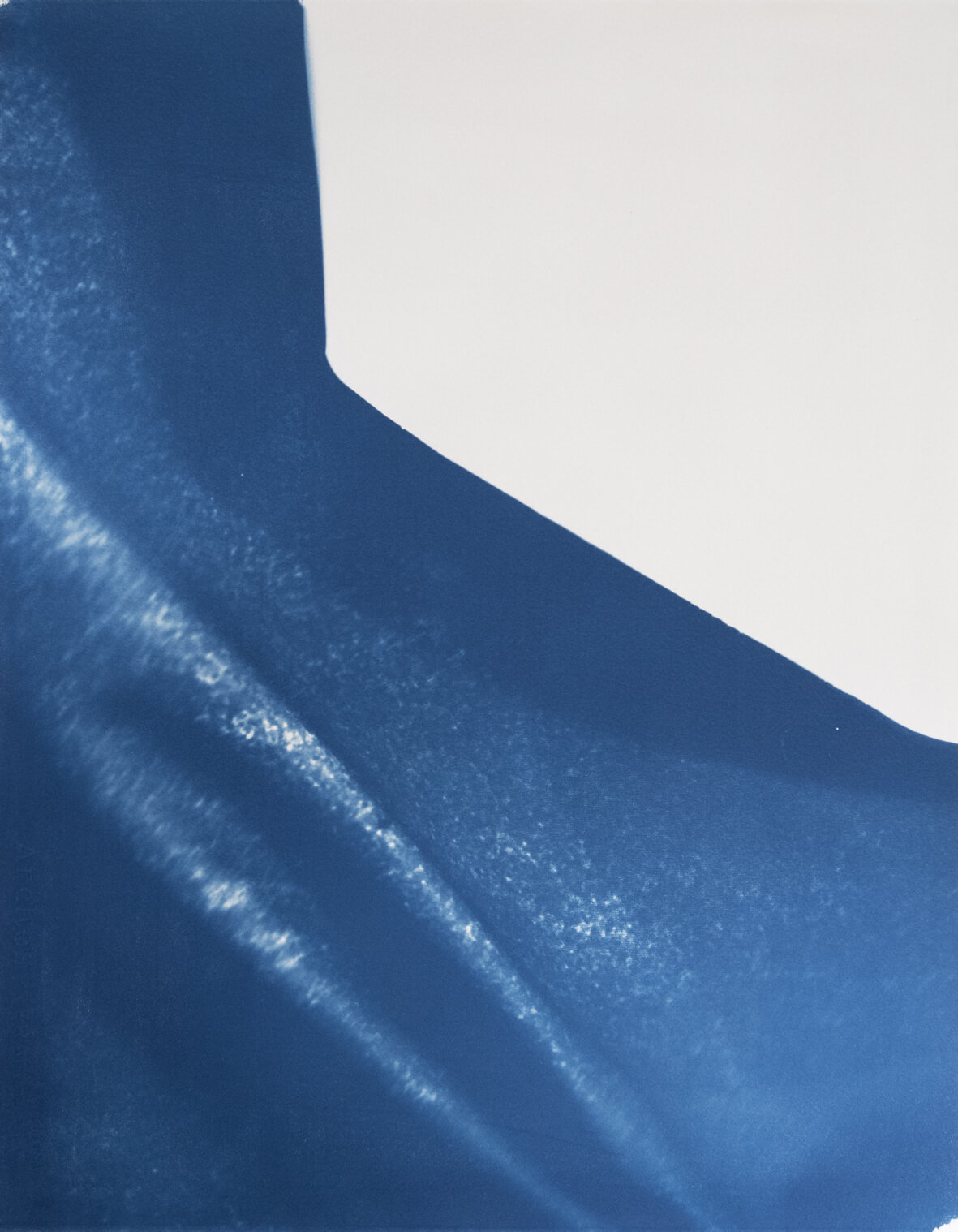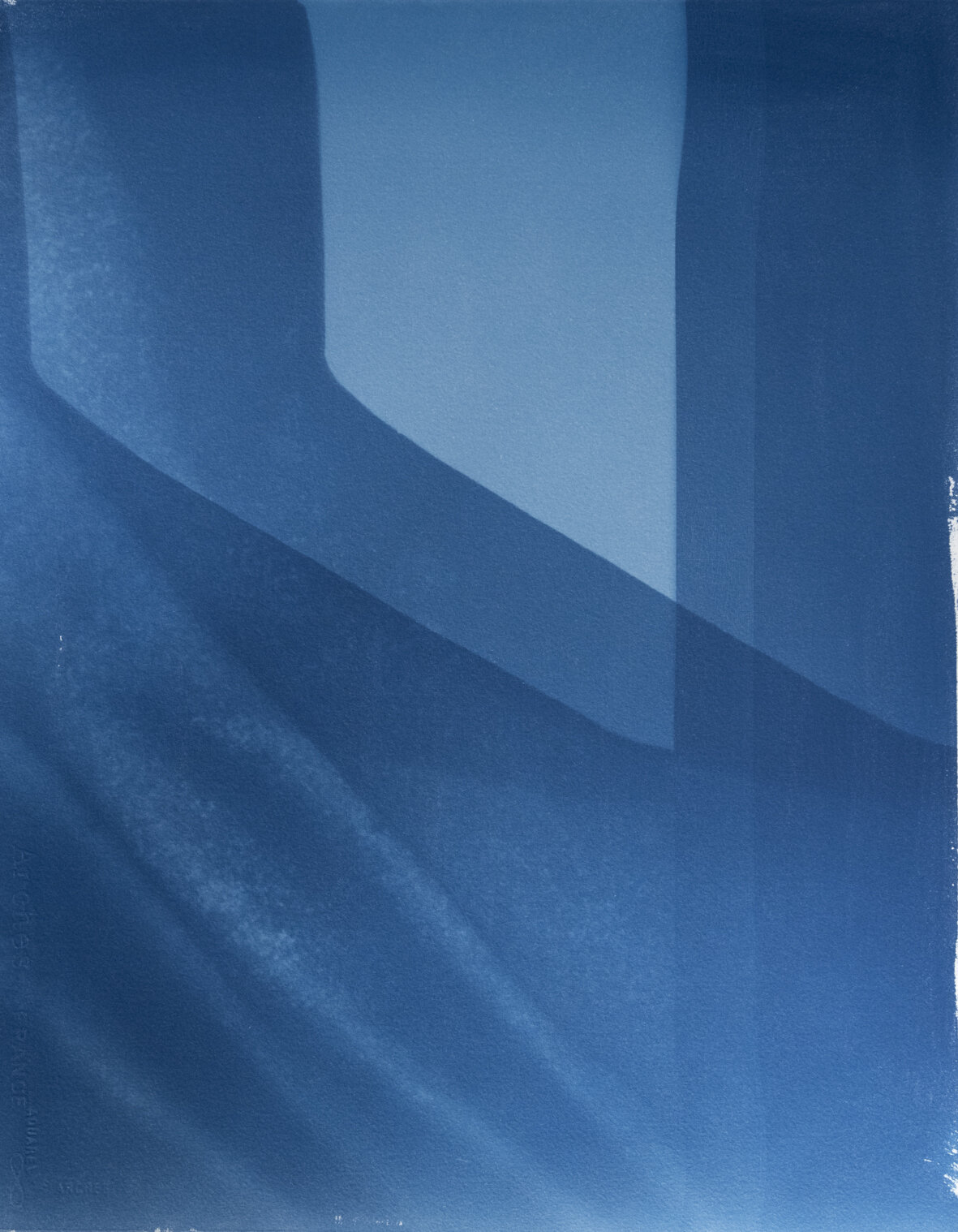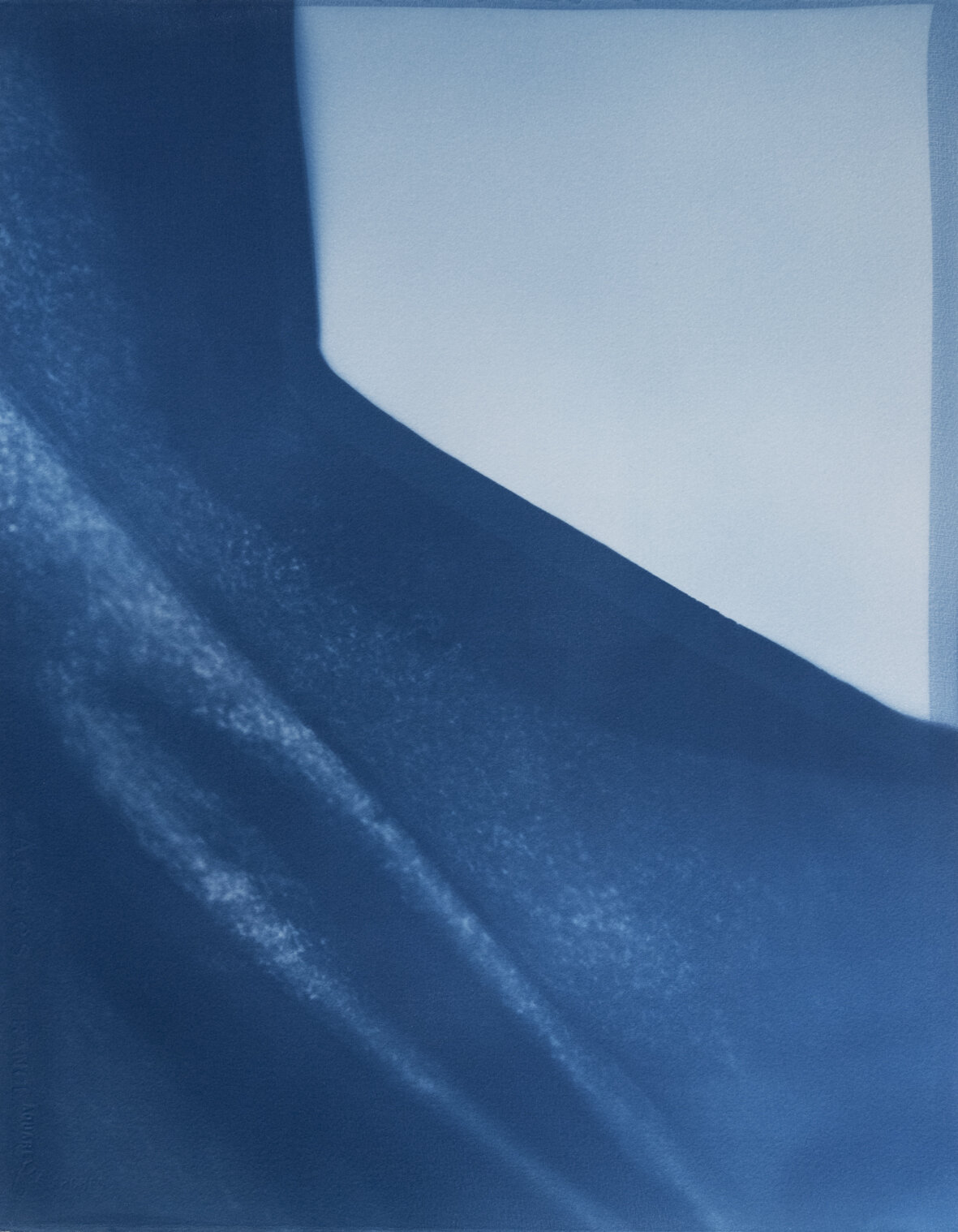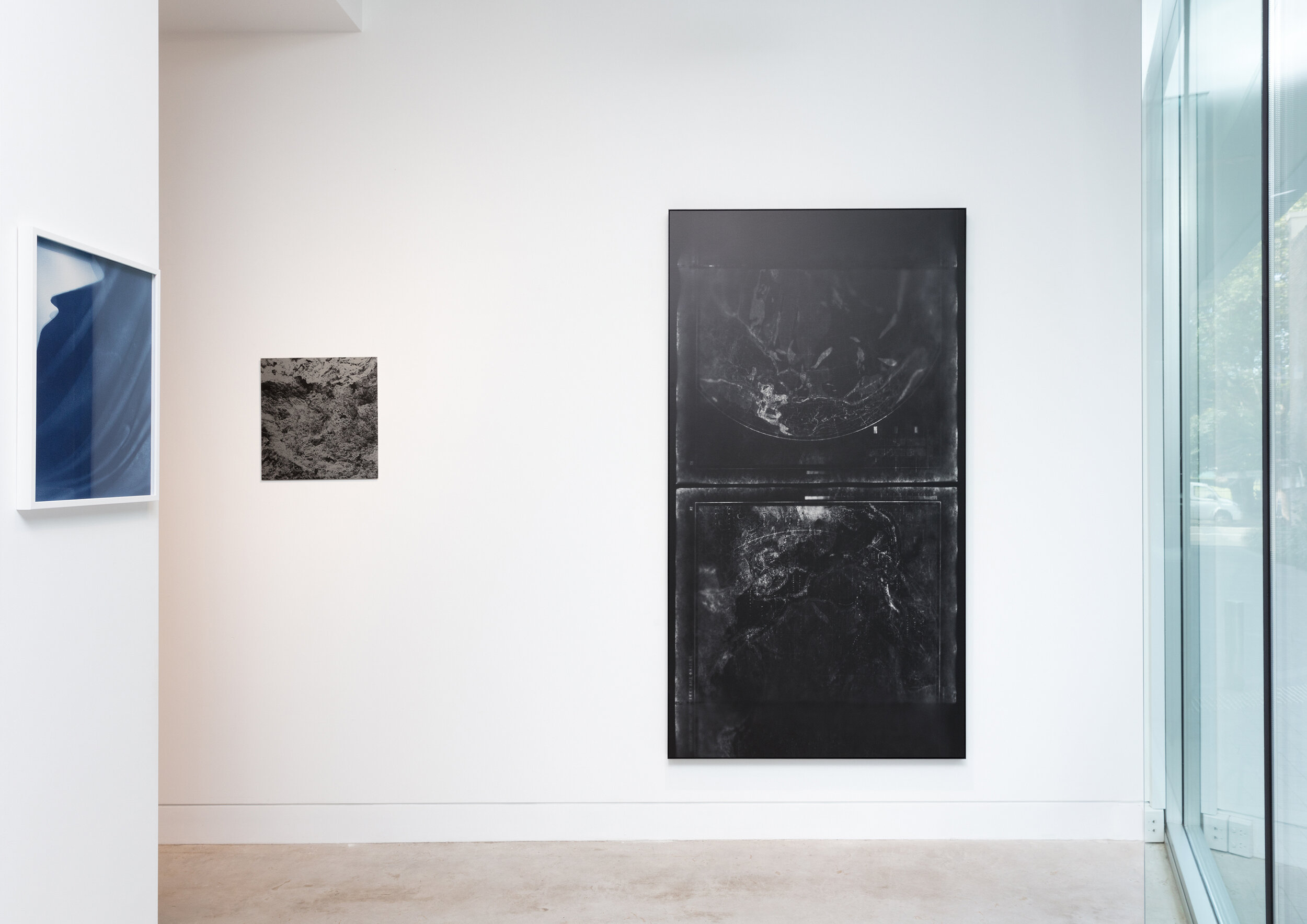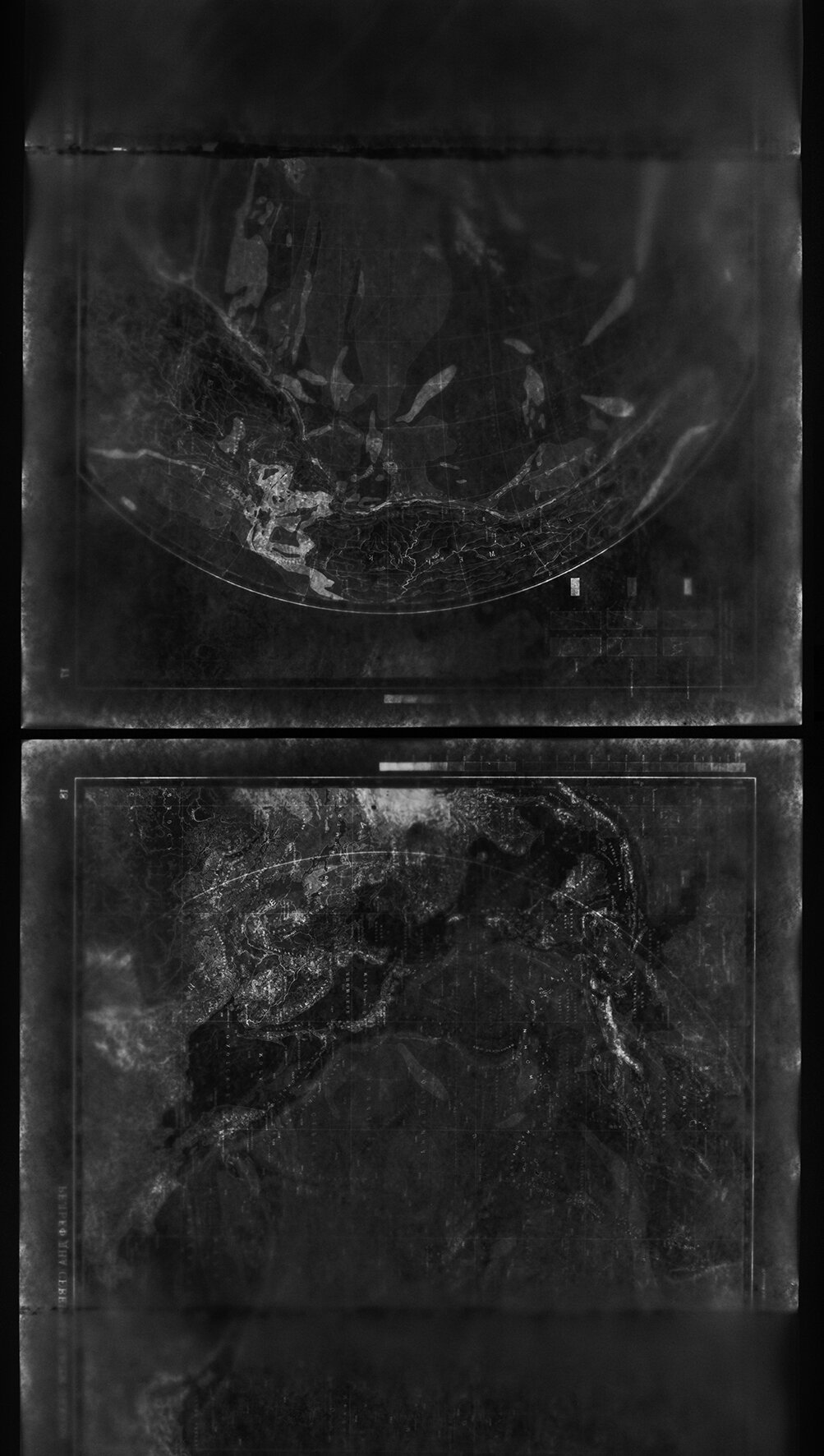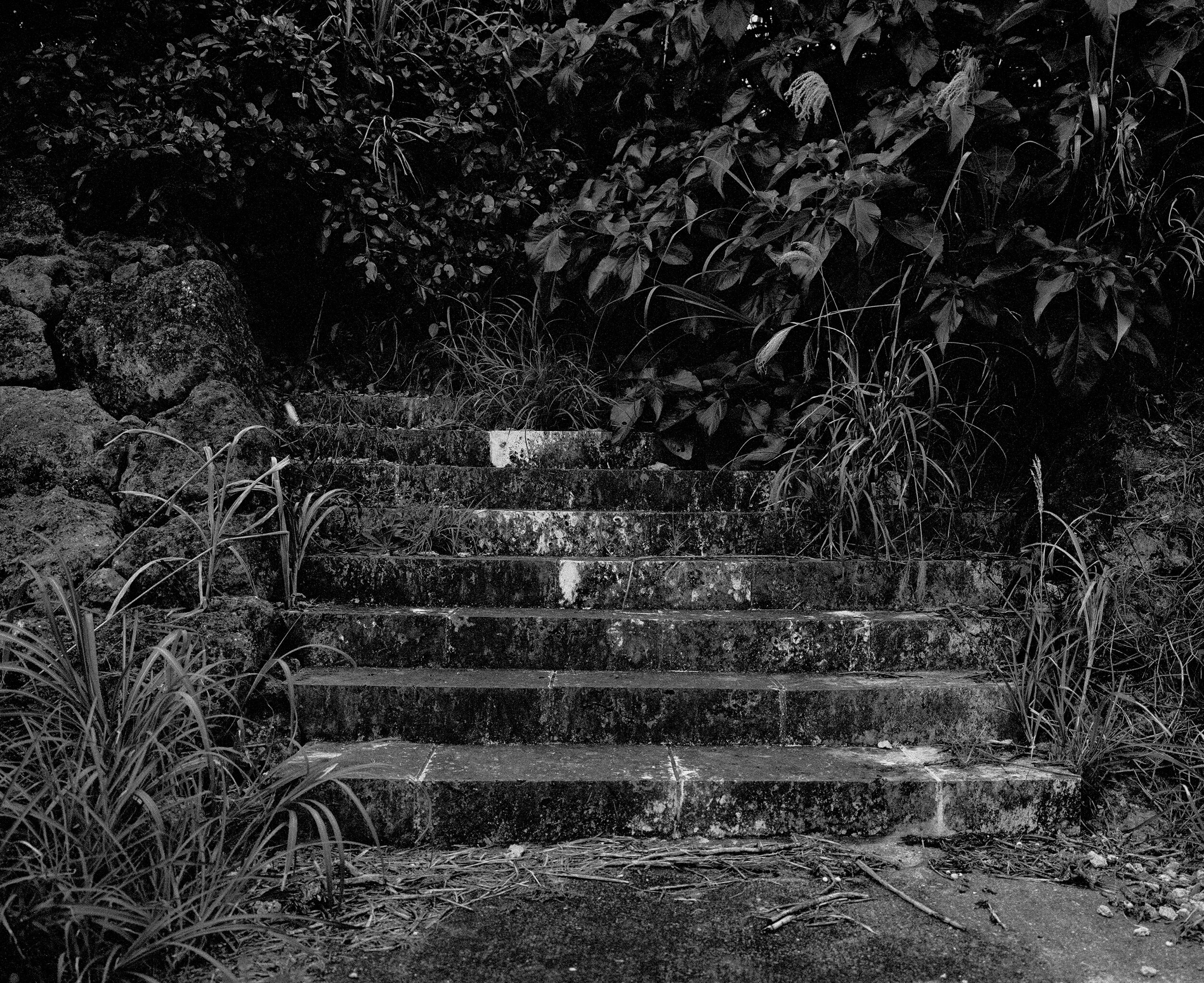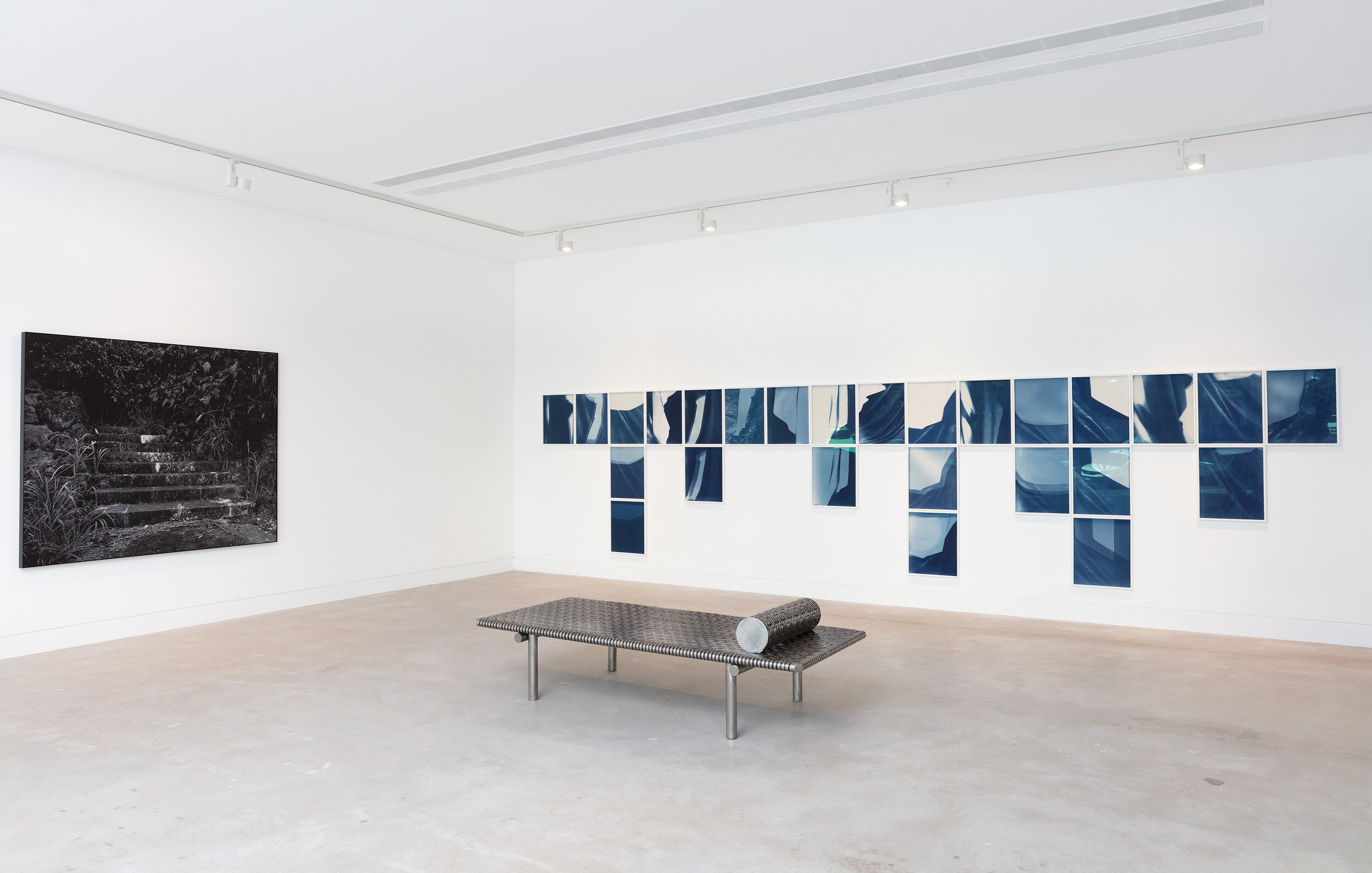Measures of Refraction
Gallery Sally Dan-Cuthbert, Sydney
3-27 September 2020
Measures of Refraction represents the development of Pluta’s work following her underwater research in Yonaguni, Japan in 2018. The exhibition brings together 26 unique cyanotypes and two mural photographs to consider the form, function and legibility of the photographic image. Pluta offers a way of subverting the exactness of photographic reproduction through reflexes that are constantly changing and by employing chance in the work’s materialisation. Her compositions unfold in their making and assume an infinite number of variations based on the conditions in which they were made.
Invented in 1842, cyanotype is a photographic printing process that uses sunlight and iron salt solutions to fix the silhouette of an object that has been placed onto photosensitive paper. Known for their Prussian blue colour and tonal variation, cyanotypes were first employed to reproduce notes, diagrams and botanical studies. Pluta’s cyanotypes are made in response to the disassembly of her large-scale work Apparent Distance 2019 (commissioned by the Art Gallery of New South Wales for The National 2019: new Australian art) that depicted footage captured by Pluta in 2018 when she experienced the underwater Yonaguni Monument.
The process of making the cyanotypes for the iterative series Blue spectrum and descent brought back the physical conditions of diving and photographing in Japan. While harnessing sunlight to print the cyanotypes in Sydney, the works were affected by the wind that threatened to blow the negatives away. These circumstances signalled back to the turbulent winds and currents in Yonaguni, at the cusp of the Pacific Ocean and the East China Sea, which made the dive precarious. As such, the environmental conditions in which the imagery was obtained are subtly echoed in the making of this new work, through a series of unrepeatable moments orchestrated by the elements. These abstracted duplications, in their very nature, refract the essence of the site.
Blue spectrum and descent is presented against Pluta’s own version of a page from an oceanic atlas. Her mural photograph Oceanic Atlas (vanishing) wasmade through a haptic, camera-less printing process that echoes the physical features of oceans and gestures towards the erasures of coastlines and invented depths. The detailed scientific data represented in the source material are unhinged by Pluta’s contact negatives that she makes by passing light through the original artefact in the darkroom, thereby forming a fictitious diagram. The additional mural photograph, Untitled (stair), depicts an anchored stair, overgrown with foliage and ascending into a void. Packed with allegorical potential, the work is an example of the artist’s intentional coupling of images in her installations, which draw out the conflated languages of photography and the nuances they embody as physical objects.
Measures of Refraction speaks to the permeability of photographs, and responds to the precariousness of Yonaguni’s sunken rock formation and the sensations of being submerged underwater.
photo documentation: Simon Hewson

